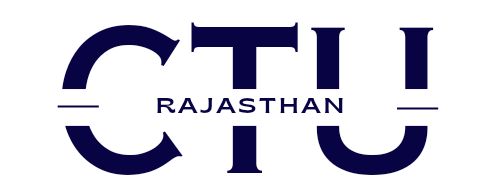Internal Assignment for July-2023 and January-2024. Paper Code (MSCCS-105) (Computer Networking and Internet).
Section-A
(सभी प्रश्न कनरे अनिवार्य हैं, शब्द सीमा – 30 शब्द)
Q.A.1 : Why are pairs of wires twisted together in UTP cables ?
Ans (Q.A.1) : Unshielded twisted pair (UTP) cables are found in many Ethernet networks and telephone systems. In this cable, two individual wires in a single pair are twisted around each other, and then the pairs are twisted around each other, as well. This is done to reduce crosstalk and electromagnetic interference. This Crosstalk and Electromagnetic interference are not good for Network Performance. Twisted pairs are color-coded to make it easy to identify each pair.
For more about Twisted Pairs Cable, Click Here.
Q.A.2 : List the tasks performed by transfer layer of TCP/IP ?
Ans (Q.A.2) : There are some Function of Transport layer in TCP/IP Model-
- The Process to Process Delivery
- End-to-End Connection between Hosts
- Multiplexing and Demultiplexing
- Congestion Control
- Data integrity and Error correction
- Flow control
To Understand in details you can visit, Responsibilities of Transport Layer. Click Here.
Q.A.3 : What is the significance of PING Command ?
Ans (Q.A.3) : The Ping command is a network utility tool that is widely used to test the reachability of a host (usually a computer or a server) on an Internet Protocol (IP) network. It also measures the round-trip time it takes for a data packet to travel from the source device to the destination and back.
To know more about Ping Command, Click Here.
Q.A.4 : What is the use of PROXY Server ?
Ans (Q.A.4) : When a computer connects to the internet, it uses an IP address. A proxy server is essentially a computer on the internet that has an IP address of its own.
A proxy server is a system or router that provides a gateway between users and the internet. Therefore, it helps prevent cyber attackers from entering a private network. It is a server, referred to as an “intermediary” because it goes between end-users and the web pages they visit online.
Uses of Proxy Server :
- Improve security
- Secure employees’ internet activity from people trying to snoop on them
- Balance internet traffic to prevent crashes
- Control the websites employees and staff access in the office
- Save bandwidth by caching files or compressing incoming traffic
To know more about Server and it’s Working, Click Here.
Section-B
(कोई भी दो प्रश्न करने अनिवार्य हैं, शब्द सीमा – 200 शब्द)
Q.B.1 : Describe the basic requirements of developing a professional website with suitable examples ?
Ans (Q.B.1) : A professional website is a site that’s high in quality, easy to navigate, mobile-friendly, simple, and aesthetically pleasing. The site also supplements the customer journey and provides visitors with the information they’re looking for right away.
Creating a professional website can help your business in many different ways. Before you start building the site, it’s important to closely examine your goals. What’s the purpose of your website, and what are you trying to achieve? By following the steps outlined above, you can build an effective website that enables you to accomplish your goals.
There are a few components that your website absolutely needs to have to boost the likelihood of success. This includes mobile optimization, easy navigation, and search engine optimization.
To create a web page, you will need to have a few basic requirements:
- A text editor: You can use any plain text editor like Notepad, Sublime Text, or Atom to write HTML, CSS, and JavaScript code.
- HTML: HTML is the basic structure of a web page. You will need to learn HTML tags and elements to create a webpage.
- CSS: CSS is used to style the web page. You can use CSS to change the layout, font, color, and other visual aspects of your web page.
- JavaScript: JavaScript is used to add interactivity to the web page. You can use JavaScript to create animations, validate forms, and more.
- Web Hosting: Once you have created your web page, you will need to host it on a web server. There are many web hosting services available that can help you host your web page.
Overall, creating a web page requires basic knowledge of HTML, CSS, and JavaScript, as well as a text editor and a web hosting service. Example like : https://rajctu.com/
Q.B.2 : Describe the functionalities of SSL with suitable examples ?
Ans (Q.B.2) : SSL, or Secure Sockets Layer, is an encryption-based Internet security protocol. It was first developed by Netscape in 1995 for the purpose of ensuring privacy, authentication, and data integrity in Internet communications. SSL is the predecessor to the modern TLS encryption used today.
The SSL certificate has several important characteristics that make it a reliable solution for securing online transactions: (कोई भी चार लिख लो)
- Encryption: The SSL certificate uses encryption algorithms to secure the communication between the website or service and its users.
- Authentication: The SSL certificate verifies the identity of the website or service, ensuring that users are communicating with the intended party and not with an impostor.
- Integrity: The SSL certificate uses message authentication codes (MACs) to detect any tampering with the data during transmission.
- Non-repudiation: SSL certificates provide non-repudiation of data, meaning that the recipient of the data cannot deny having received it.
- Public-key cryptography: SSL certificates use public-key cryptography for secure key exchange between the client and server.
- Session management: SSL certificates allow for the management of secure sessions, allowing for the resumption of secure sessions after interruption.
- Certificates issued by trusted CAs: SSL certificates are issued by trusted CAs, who are responsible for verifying the identity of the website or service before issuing the certificate.
Example of SSL Working :
The process works like this:
- A browser or server attempts to connect to a website (i.e., a web server) secured with SSL.
- The browser or server requests that the web server identifies itself.
- The web server sends the browser or server a copy of its SSL certificate in response.
- The browser or server checks to see whether it trusts the SSL certificate. If it does, it signals this to the webserver.
- The web server then returns a digitally signed acknowledgment to start an SSL encrypted session.
- Encrypted data is shared between the browser or server and the webserver.
To know more about SSL, Click Here.
Q.B.3 : Describe the fundamental difference between Circuit-Switching and Packet-Switching with suitable examples.
Ans (Q.B.3) : Coming soon…..keep visiting.
Q.B.4 : How JavaScript can be used to validate input data in HTML ? Describe with suitable examples.
Ans (Q.B.4) : Coming soon…..keep visiting.
Section-C
(कोई भी एक प्रश्न करना अनिवार्य है, शब्द सीमा- 800 शब्द)
Q.C.1 : Distinguish among SMTP, POP, IMAP in details ?
Ans (Q.C.1) : Read This Article…. Difference Between SMTP, POP, IMAP.
Q.C.2 : What are the advantages of Layered Model Protocol ? Explain the protocol architecture for TCP/IP ?
Ans (Q.C.2) : Coming soon…..keep visiting.

